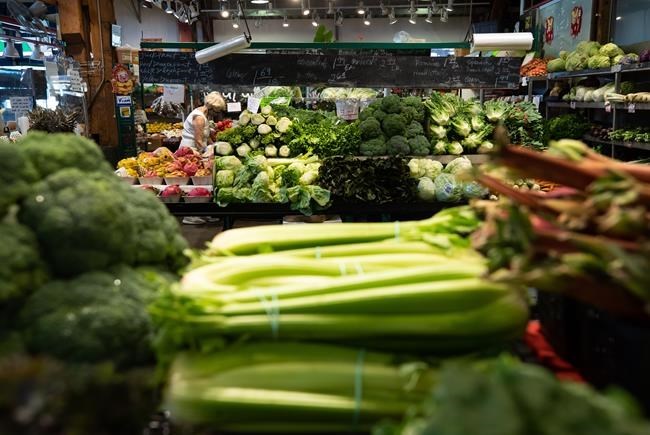Food inflation appears to be easing in Canada, but experts say shoppers shouldn't expect lower prices at the grocery store.
Statistics Canada said Tuesday the cost of groceries in February rose 10.6 per cent compared with a year before, down from an 11.4 per cent year-over-year increase in January.
Yet a falling food inflation rate doesn't mean the price of food is coming down.
Instead, it means prices are rising less quickly, signalling the worst of the grocery price hikes could be behind us.
"Consumers may still feel sticker shock at the grocery store because the products they buy are up closer to 15 or 20 per cent," said Sylvain Charlebois, director of the Agri-Food Analytics Lab at Dalhousie University.
In the month of February, multiple pantry staples increased by nearly double the overall inflation rate for food purchased from stores.
Pasta prices rose 23.1 per cent last month compared with a year earlier, flour jumped 22.9 per cent and butter increased 19.7 per cent, according to Statistics Canada.
Fats and oils also climbed significantly higher than the food basket average, up 18.8 per cent year over year. Sugar and syrup prices rose 15 per cent, cereal was up 14.8 per cent and eggs increased 13.6 per cent.
Still, the overall pace of food price increases eased in February and is expected to abate further in the coming months, Charlebois said.
"We expect the food inflation rate to continue to drop as we head into spring and early summer," he said.
Meanwhile, restaurant prices eased even more than grocery prices in February.
Statistics Canada said food purchased from restaurants rose 7.7 per cent last month compared with a year before, down from 8.2 per cent price growth in January.
"People are being extra careful with their budget these days and restaurant operators are being very prudent with menu prices," Charlebois said.
This report by The Canadian Press was first published March 21, 2023.
Brett Bundale, The Canadian Press



